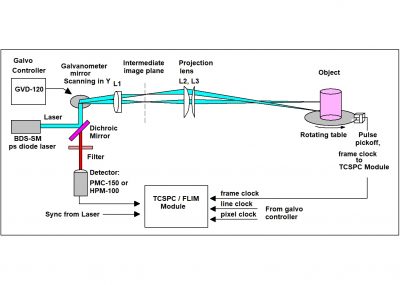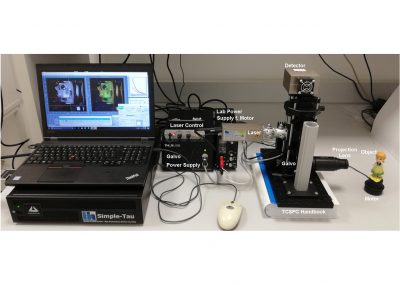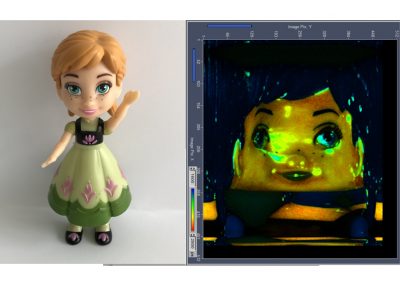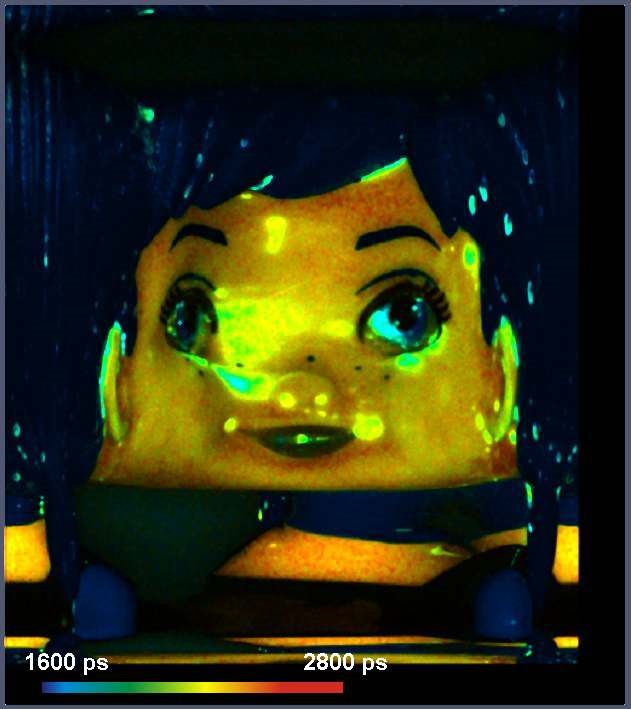
- Imaging of Rotating Object
- Object Scanned by Focused Laser Beam
- Object Rotates Around Vertical Axis
- Horizontal Scan by Rotation
- Vertical Scan by Galvanometer Mirror
- Image Acquisition by TCSPC FLIM
- Data Analysis by SPCImage NG
- Imaging of NIRS Diffusely Reflected Light
- Imaging by NIRS Fluorescence
Description
Small-animal tomography techniques - no matter whether optical or non-optical - often use rotation of the measurement object to obtain data for different projection angles. Although such techniques are not normally focusing on fluorescence lifetime detection they can be fa-vourably supplemented by recording time-resolved data, especially fluorescence lifetime im-ages or time-resolved diffuse reflection images. The fluorescence lifetime delivers direct in-formation on molecular parameters, and time-resolved diffuse reflection data deliver scatter-ing and absorption parameters from different tissue layers.
The optical principle is shown in the figure below. The object is placed on a table which rotates it around its vertical axis. Simultaneously, the object is scanned vertically by a fast galvanometer mirror. A bh BDS-SM picosecond diode laser is used for exciting fluorescence in the object. A lens, L1, focuses the laser beam into an intermediate image plane. A projection lens system, L2 and L3, projects this plane on the surface of the object. As the galvanometer mirror is moving, the laser spot moves up and down the surface of the object. With the rotation of the table, the entire surface of the object is scanned by the laser spot. Fluorescence emitted at the object is projected back into the intermediate image plane and collimated by L1. It is separated from the excitation light by a dichroic mirror. It then passes a long-pass or bandpass filter and is detected by a PMC-150 or HPM-100 detector. The photons are recorded by a bh TCSPC module, images are built up by the normal TCSPC FLIM process.
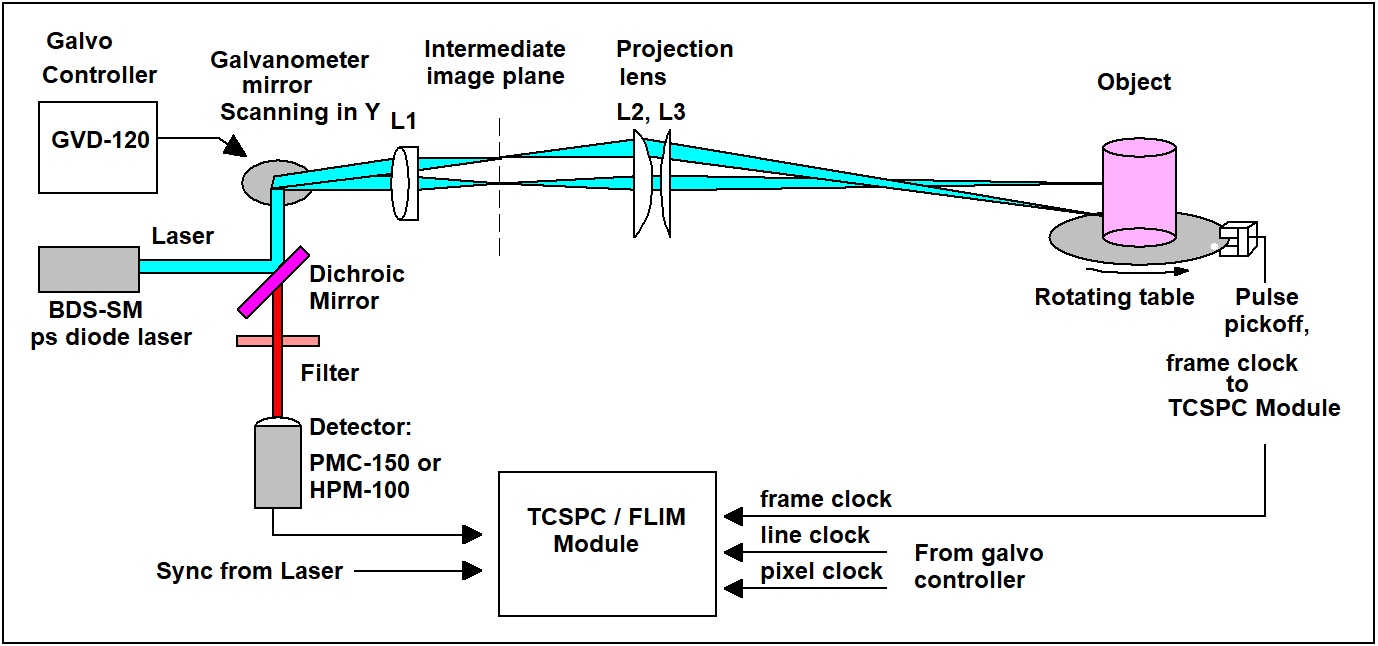
Downloads
Documents
Please see
TCSPC System Records FLIM of a Rotating Object, Application Note.
The bh TCSPC handbook, 9th edition, Section 'Imaging of a Rotating Object', page 422.

